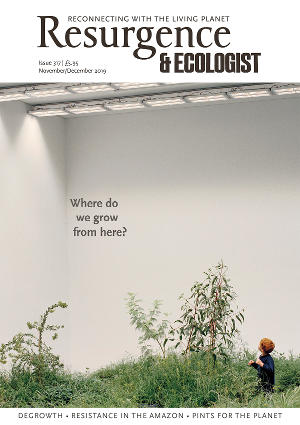When Roger Deakin noticed “a chimney rising just above the treetops” on one of his forays to Mellis Common in Suffolk in 1969, he probably had no idea that he was embarking on a love affair that would see him and Walnut Tree Farm merge into one another like two self-grafted trees.
Life at Walnut Tree Farm, the beautifully presented book by Rufus Deakin, Roger’s son, and Titus Rowlandson, one of the current owners, offers an insider’s glimpse into the evolving story of the farm and the land, which was the seat of Roger’s creativity and a world he wrote about so vividly.
The patchwork of photographs, diary entries and first drafts of poems and scripts takes us from the discovery of the farm to the present day. Early black and white photos show a derelict building with a mouldering thatched roof and a wild-haired, long-limbed optimist with a camera slung round his neck – and a moustache you could only get away with in the 1970s. A man at the very start of his story.
What comes across from the early entries, though, is that Roger was no dreamer. He had determination, putting in long days of back-breaking labour to scythe nettles and shovel accumulated pig and chicken manure out of the bedrooms, no less. He also clearly had the charisma to yoke others to his vision, casually mentioning that Jenny, his then girlfriend, had pulled down a partition wall. No small feat, I would imagine.
Later photographs document iconic moments in his story: the arrival of the shepherd’s hut, where he did much of his writing. The restoration of the moat, in which he took the regular rain-lashed dips that inspired his seminal book Waterlog; the world of a smallholder, barns stuffed with battered objects that might one day be useful; leaking buildings mended with gaffer tape and tarpaulin – the DIY we all do as a quick fix and mean to put right later.
For Roger, though, there was no later. He died next to the fireplace in his beloved farmhouse in 2006. His bowsaws now hang from a hook in a slowly collapsing barn, their blades rusting in a way that only happens when the woodsman is gone. The last part of the book documents what happened to Walnut Tree Farm after Roger’s death. He had requested that the house be mothballed for a year, a decision that allowed the dust to literally settle and calmer heads to decide its fate. When the light was let back in, the place was untouched. A deeply personal series of photos show Roger’s desk untidied, his chainsaw gear hung by the back door ready for use. Rowlandson, a childhood friend of Roger’s son, moved into the house with his family, and they now tread the delicate path between turning the place into a museum and breathing in new life.
They have done so with admirable lightness. While the rusting cars and makeshift sheds are slowly being consumed by brambles, they have restored the house, the moat, the shepherd’s hut, and the railway wagon in which visitors can now stay. “Every job that needed doing entailed an unspoken dialogue with Roger,” Rowlandson writes. It was a “process of transferral from Roger to us”. This process slowly continues just as the life of the farm continues, but Roger’s weathered stick found in the Welsh mountains still hangs above the fireplace, and his spirit is in every corner of the home he built. If you have read Roger’s books and wished you could visit the home that inspired him, this book opens the front door and invites you inside.






